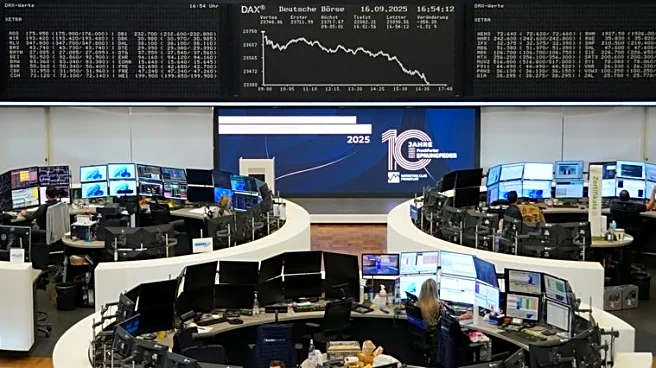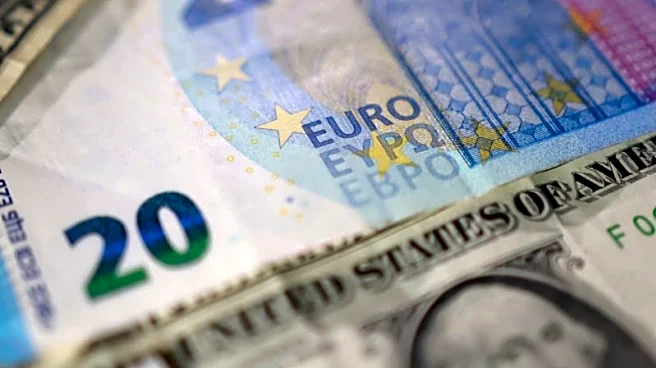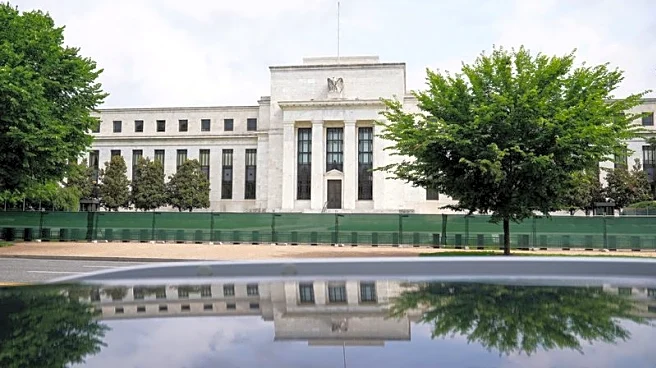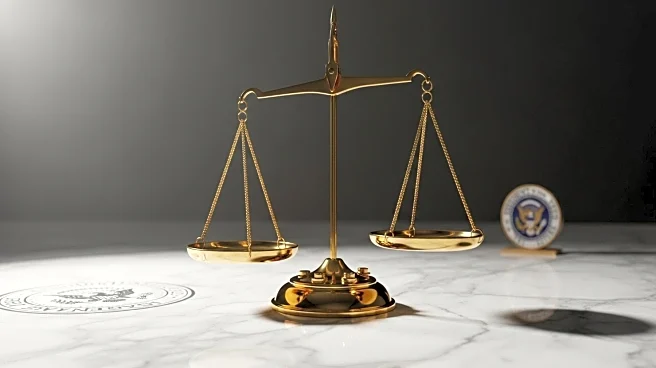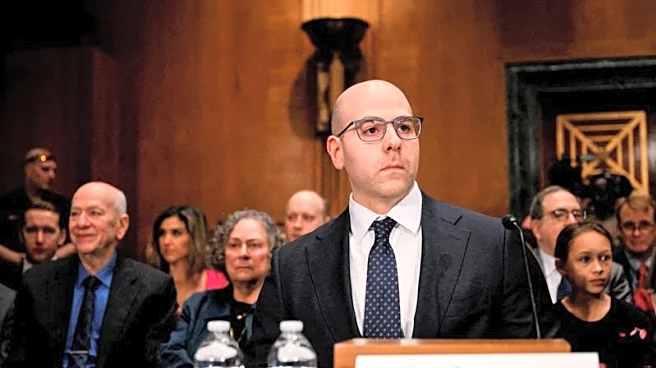What's Happening?
The Federal Reserve has reduced interest rates by a quarter point, marking its first rate cut of the year. This decision comes as the Fed navigates pressures from President Trump, who has been advocating for lower rates, and concerns over a weakening labor market. The rate cut lowers the central bank's benchmark rate to a range of 4 percent to 4.25 percent. Despite the cut, the Fed remains divided on the necessity of further reductions, with some officials expressing doubts about additional cuts this year. Federal Reserve Chair Jerome H. Powell emphasized the challenges in policy-making, noting the absence of a 'risk-free' path. The decision was not unanimous, as Stephen Miran, a recent appointee and economic adviser to President Trump, dissented, favoring a larger cut.
Why It's Important?
The rate cut by the Federal Reserve is significant as it reflects the central bank's response to a complex economic environment characterized by President Trump's tariffs, which have contributed to inflationary pressures, and a softening labor market. The decision impacts various economic stakeholders, including consumers and businesses, as it influences borrowing costs for mortgages and loans. While the cut aims to support economic growth, it also highlights the Fed's cautious approach amid signs of 'stagflation-lite'—a combination of persistent inflation and a weakening job market. The move could have broader implications for U.S. economic policy and the Fed's independence, especially given the political pressures from the Trump administration.
What's Next?
Looking ahead, the Federal Reserve has signaled the possibility of two more rate cuts by the end of the year, though this is not a firm commitment. The central bank plans to assess economic conditions on a 'meeting by meeting' basis. The Fed's future actions will likely be influenced by ongoing economic data, particularly regarding inflation and employment trends. Additionally, the recent legal ruling allowing Fed governor Lisa Cook to retain her position despite challenges from the Trump administration may affect the Fed's dynamics and decision-making processes. The political landscape, including potential appeals by the White House, could further impact the Fed's operations and its perceived independence.
Beyond the Headlines
The Federal Reserve's decision to cut rates amid political pressure raises questions about the central bank's independence and the potential influence of the executive branch on monetary policy. The involvement of Stephen Miran, who retains ties to the White House, underscores concerns about the Fed's autonomy. This situation highlights the delicate balance the Fed must maintain between responding to economic indicators and resisting political interference. The broader implications for the U.S. economy include potential shifts in investor confidence and market stability, as stakeholders assess the Fed's commitment to its dual mandate of maximum employment and stable inflation.



